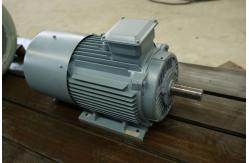AC Radial Flux Permanent Magnet Generator 5Kw For Wind Power
|
|
AC Radial Flux On-Grid Wind Power Permanent Magnet Generator
Product Drawing
Technical Parameter
Detailed Pictures What is the permanent magnet generator?A permanent magnet generator (PMG) is an electric generator that uses permanent magnets to create a magnetic field. The magnetic field is used to induce a voltage in a coil of wire that is connected to the generator. This voltage is then used to power electrical devices or to store energy in batteries.
The structure
The design of a PMG is relatively simple. It consists of a rotor, stator, and permanent magnets. The rotor is a rotating shaft that contains permanent magnets. The stator is a stationary component that surrounds the rotor and contains the coils of wire. When the rotor spins, the magnetic field created by the permanent magnets cuts across the coils of wire in the stator, inducing a voltage.
Working Principle
The permanent magnet generator uses the principle of electromagnetic induction in that the wire cuts the magnetic field line to induce an electric potential and converts the mechanical energy of the prime mover into electrical energy output. It consists of two parts, the stator, and the rotor. The stator is the armature that generates the electricity and the rotor is the magnetic pole. The stator is composed of an armature iron core, uniformly discharged three-phase winding, machine base, and end cover. The rotor is usually a hidden pole type, which is composed of excitation winding, iron core and shaft, guard ring, center ring, and so on. The excitation winding of the rotor is fed with DC current to generate a magnetic field close to the sinusoidal distribution (called the rotor magnetic field), and its effective excitation flux intersects with the stationary armature winding. When the rotor rotates, the rotor's magnetic field rotates together with it. Every time a revolution is made, the magnetic lines of force cut each phase winding of the stator in sequence, and a three-phase AC potential is induced in the three-phase stator winding. When the pm generator is running with a symmetrical load, the three-phase armature current synthesizes to generate a rotating magnetic field with synchronous speed. The stator and rotor fields interact to generate braking torque. The mechanical torque input from the turbine overcomes the braking torque and works.
Features ① The generator has many poles, which improve the frequency and efficiency, saving the cost of rectifiers and inverters. ② Finite Element Analysis is used when designing the generator, compact structure. Low startup torque, solves the problem of small wind startup, improving wind energy utilization. ③ Leave out the gear increaser, improve the reliability and efficiency of the generator, and lower the amount of maintenance. ④ H class insulation, vacuum pressure impregnation. ⑤ Have many structures such as vertical axis, horizontal axis, internal rotor, external rotor, and plate type. ⑥ Strong rotors, the generator could achieve high speed. ⑦ Small size, lightweight, high energy density, suitable for special situations. ⑧ Run efficiency throughout the whole speed range, high efficiency. ⑨ Use imported high-speed oil-contained bearings, maintenance free, and high reliability. ⑩ The parameters like voltage, speed, and power can be customized.
The shape can be changed. Spline shaft, biaxial extension, and
flange can be used. Application PMGs are used in a variety of applications, including wind
turbines, hydroelectric dams, and wave energy converters. They are
particularly useful in situations where it is difficult or
impossible to connect to a power grid, such as remote locations or
offshore installations. Advantages
One of the advantages of PMGs is that they do not require an external power source to generate electricity. This makes them ideal for off-grid applications where a reliable source of electricity is needed. In addition, PMGs are relatively low-maintenance compared to other types of generators, as they do not require brushes or other components that wear out over time. Another great thing about permanent magnet generators is that you do not need to spend a lot of time and money on maintenance work. Just install it and wait there expecting it to make money for you!
The difference between electromagnet and permanent magnet
Unlike electromagnets, permanent magnets do not require any external power source. The main difference between the use of electromagnets and permanent magnets in wind turbines is that electromagnets require slip rings to power the electromagnets, while permanent magnets do not. Likewise, gearboxes require ongoing maintenance, which adds significantly to costs.
The function of the gearbox is to convert the low speed of the turbine shaft to the higher speed required by the induction generator to generate electricity, but the gearbox causes friction and reduces performance. For example, by using neodymium magnets instead of electromagnets, we can increase the efficiency of turbines, reduce efficiency and reduce maintenance costs.
Today, engineers have developed more sophisticated electromagnetic generators that work in tandem with wind captured by wind turbines to generate electricity for local consumption in homes, schools, hospitals, commercial establishments and more. |
||||||||||||||||||||||||||||||||||||||||||||||||||||||||||||||||||||||||
| Product Tags: Radial Flux Permanent Magnet Generator Permanent Magnet Generator 5Kw 5KW PMG Generator |
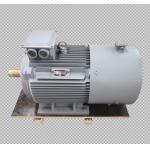
|
IP54 IP55 High Power Low Speed Permanent Magnet Generator |

|
10-3000 Kw Low Speed Permanent Magnet Generator For Electricity Generation |
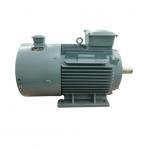
|
High Efficiency Permanent Magnet Synchronous Generator Eco Friendly |
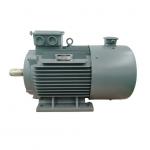
|
Low Rpm Waterproof Three Phase Ac Permanent Magnet Generators |

|
High Frequency High Output Magnetic Field Permanent Magnet Generators Low Rpm |
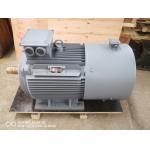
|
Hydro Turbine Permanent Magnet Electric Generator 40kw 250rpm |

